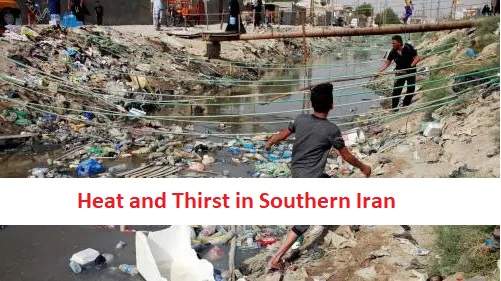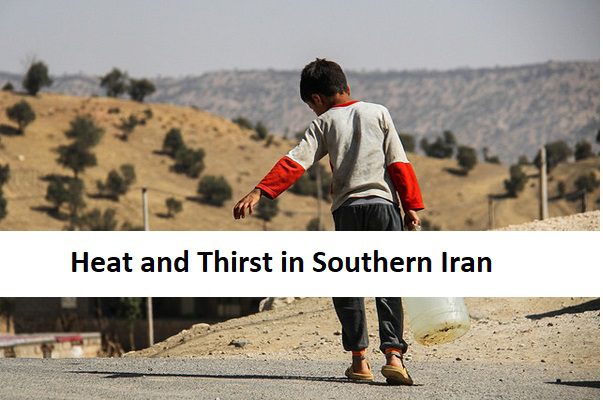Southern Iran’s Summer Heat: A Struggle for Survival Amidst Scorching Temperatures and Water Scarcity
As relentless summer heat continues to grip southern Iran, Sepideh, a physician, and her dentist husband endure the sweltering days, venturing out of their home only for work in the mornings and for groceries when supplies are depleted. With temperatures soaring to a staggering 57 degrees Celsius (approximately 135 degrees Fahrenheit) on her car’s dashboard thermometer, Sepideh humorously posted on Instagram, “Only 57 degrees!”
Despite the privilege of having air-conditioning at home, a luxury not accessible to all, a harsh reality grips much of southern Iran. Poverty and extreme heat are crushing the region, where vast deserts, coupled with the humidity from the nearby Persian Gulf, render the area prone to severe heatwaves and droughts, further exacerbated by climate change.
As the Iranian economy stagnates and inflation reaches double digits, air-conditioning becomes an unaffordable luxury for many, trapping people in indoor jobs with no escape from the relentless heat.
The chronic mismanagement of water resources has left taps running dry or spouting salty water across the country, particularly in the arid south. Iran’s water woes have reached a dire state of “water scarcity,” where the consumption surpasses supply, leaving no viable means of reversing the depletion.
While droughts intensify, groundwater and reservoirs dry up, leaving rural communities struggling to afford water, which is often trucked in or purchased from stores. Protests sparked by water scarcity erupted in Isfahan and Khuzestan Province in 2021, signaling growing discontent with the government’s inability to address the scorching heat.
Government officials have forewarned that the southeastern province of Sistan and Baluchistan, already burdened with poverty, will entirely run out of municipal water by September, signaling an impending catastrophe.
The situation in Bandar-e Dayyer, a southern coastal city, paints a grim picture. Salty and undrinkable tap water has become the norm this summer, pushing residents to take matters into their own hands as the government remains unresponsive.
Amid this adversity, people in southern Iran have learned to adapt to the sweltering heat and suffocating humidity. They limit outdoor activities to early mornings or late evenings, seek refuge near rivers and canals to meet friends, and cope with limited access to water during scorching days.


The necessity to hide indoors with air-conditioning becomes a simple yet unattainable solution for those grappling with poverty.
The ancient Persians may have pioneered innovative windcatchers to cool buildings, but modern-day Iran heavily relies on air-conditioning, leaving many trapped in their homes, struggling to endure the extreme temperatures.
As the unrelenting heat persists, Iranians in the south find themselves confined indoors, yearning for respite from the blistering sun and longing for a future where access to water and relief from the scorching heat become a reality.”
Also Read: Carolina Trufferies Journey: Unearthing Culinary Gold in NC
Our Reader’s Queries
What’s the hottest it’s ever been in Iran?
Ahvaz, Iran experienced scorching temperatures exceeding 124 degrees (51 Celsius), breaking the record for Asia’s highest temperature. In 2017, the city reached a staggering 129 degrees (54 Celsius).
What is the climate in Iran in summer?
Summer brings scorching heat and bright sunshine, although not as intense as in south-central Iran. In July and August, the average daily temperature is 27 °C (80.5 °F), but there are days when the mercury soars to 38/40 °C (100/104 °F).
What is the extreme heat in Iran?
Numerous urban areas in southern Iran have endured a prolonged period of unusually high temperatures. According to state media, the southern city of Ahvaz recorded temperatures surpassing 123 degrees Fahrenheit (51 Celsius) this week.
What is the hottest month in Iran?
Tehran sizzles in July, reaching a scorching 30°C (86°F), while January brings a chill with an average of 4°C (39°F).

